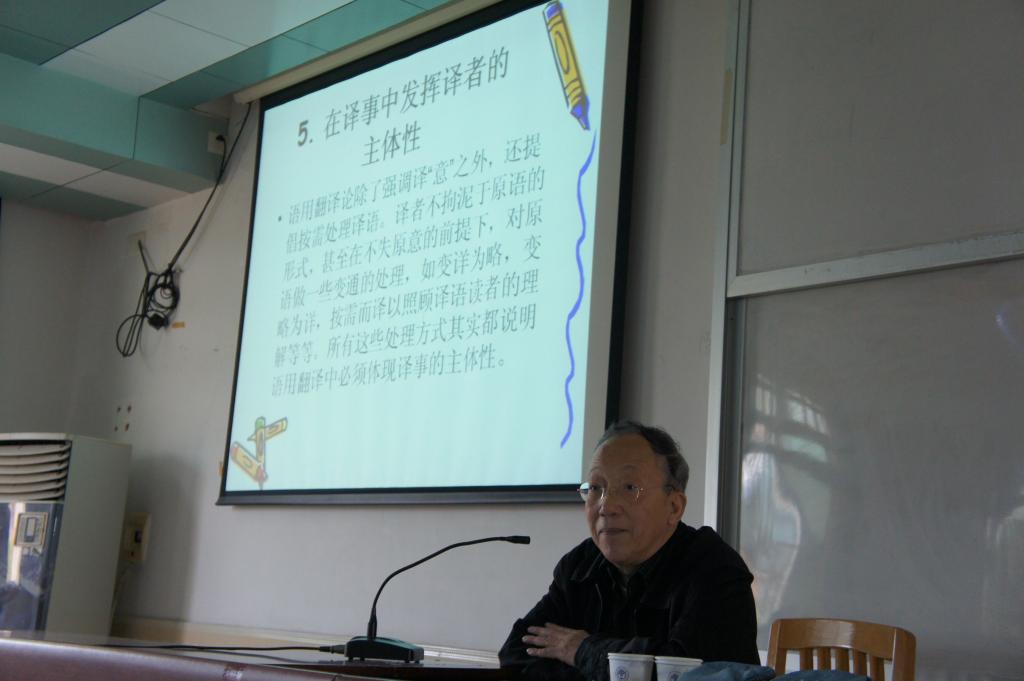Professor He Ziran, one of the most distinguished pragmatists in China was invited to give a lecture on translation competence from the perspective of pragmatics on the Translation Forum for Teacher Development.
At the beginning of his speech, He introduced “pragmatic translation”, pointing out that a ternary relation, namely, author- translator- reader of translation should be paid attention to. Later, He used vivid examples to illustrate the pragmatic translation through Relevance Theory, Adaption Theory, Transformation Theory. He believed that semantic translation is translation which is equal in amount of information with the source work, while pragmatic translation is the translation which can realize the original feature of the source work and achieve the same effect, which concludes the intention of the author, the text, and the intended effect of the information in the text. When explaining transformation theory, He said that the previous research is limited by the gap between understanding and expression. By transformation theory, transformation was added into the process of translation, thus coming into another ternary relation: understanding-transformation-expression.

Latter, He gave about 5 suggestions for developing translation competence. First, one should learn deverbalization to translate the meaning of the original text. Second, one needed to figure out the difference in terms of the ways of thinking in the source and target language. Third, one should adhere to the principle of “reader-counts”. Fourth, one needed to pay special attention to the translation of names. Last but not least, one should work hard to improve himself in translation through practice. When talking about translation practice, He recalled his rich experience as a translator in 1980s. He proved to the audience that one cannot win translation competence if one lacked practice. At last, He made a summary for the whole speech, explaining that pragmatic translation was reader and goal-oriented, which aimed to make reader easily understand the translation, at the same time, fulfill the author’s goal.
